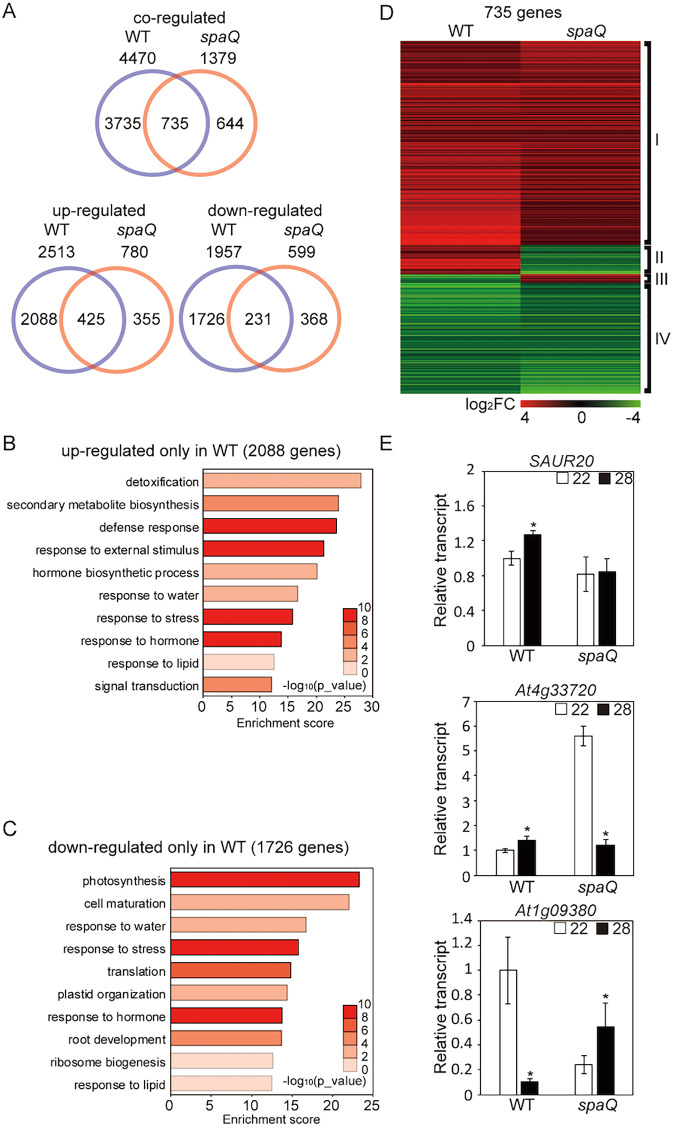Fig. 2.
SPAs regulate global gene expression at high ambient temperature. (A) Venn diagrams show co-regulated, upregulated and downregulated genes in the wild type (WT) versus the spaQ mutant at high ambient temperature. Six-day-old seedlings grown under white light were transferred to 22 or 28°C for an additional 24 h, and total RNA was extracted from three biological replicates for RNA-seq analyses. (B) Gene Ontology (GO) analysis of upregulated genes only in WT. (C) GO analysis of downregulated genes only in WT. (D) Hierarchical clustering, displaying 735 differentially expressed genes from co-regulated genes shared between WT and spaQ as shown in A. Co-regulated genes were identified with FDR<0.05. Each group represents genes upregulated in both WT and spaQ (I), genes upregulated in WT but downregulated in spaQ (II), genes downregulated in WT but upregulated in spaQ (III), and genes downregulated in both WT and spaQ (IV), respectively. (E) RT-qPCR analysis using SAUR20, already identified as a high ambient temperature marker gene, At4g33720 from group II in D, and At1g09380 from group III in D. RT-qPCR samples were from Col-0 whole seedlings grown for 5 days at 22°C and then either kept at 22°C or transferred to 28°C for 24 h. Three biological repeats were performed. Relative gene expression levels were normalized using expression levels of ACT7. Student's unpaired t-test: *P<0.05.

